Inside the Victorian forensic unit uncovering the truth of how people really died
Unlike shows such as CSI, you won’t see scientists in stilettos at the Victorian Institute of Forensic Medicine, but you will find a crack team dedicated to ‘getting truth’ for the dead.
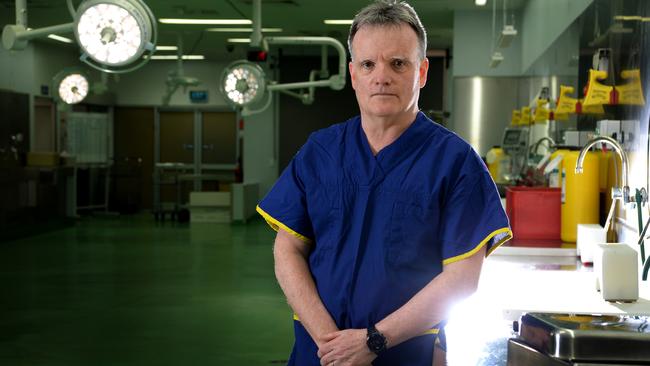
VWeekend
Don't miss out on the headlines from VWeekend. Followed categories will be added to My News.
A human jawbone protruding from the snow-covered ground caught the attention of a dog walker.
It had been 14 months since a young woman had gone missing on the hills surrounding the city of Sheffield in the United Kingdom.
Widespread searches had failed to find her and the case had gone cold.
But this man’s grisly discovery on New Year’s Day 2003 would solve the mystery surrounding her disappearance.
The next day, no more than 30m away, the rest of her remains were found in undergrowth in a ditch.
Victoria’s chief forensic pathologist Noel Woodford remembers the case clearly.
It was one of the last he was involved in while completing his training as a home office pathologist at the University of Sheffield before returning to Australia.
“It was a really sad one,” Prof Woodford said.
“Sheffield has seven hills around it. It was winter and she just went missing.
“Nobody thought any more about it, and then a walker found a jawbone sitting out.
“It turns out she had gone up there to suicide. She had drunk some alcohol, taken some tablets and died there, over a badger sett.
“So the badgers had been feeding away, and had taken that jawbone and put it somewhere else, and that is how she got identified. It was incredible.”
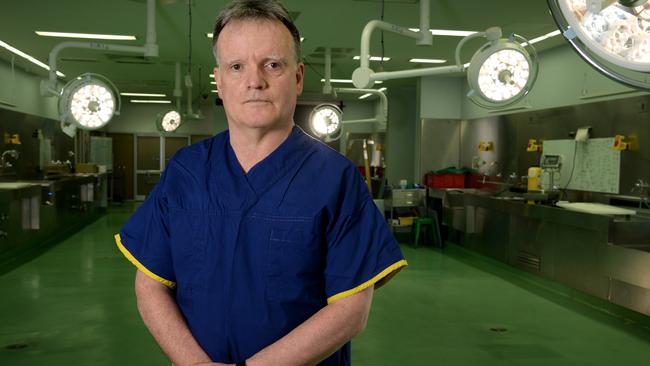
Through dental records, they were able to confirm the jawbone belonged to the 26-year-old missing woman
But to link the rest of the remains to her was more tricky and required calling upon a botanist.
“She was under some blackberry bushes, so one of the issues was how fast do blackberry bushes grow, and how does that help us with the timing, and how long she’s been there for,” Prof Woodford said.
Fast forward almost two decades and this somewhat detective for the dead is now the director of the Victorian Institute of Forensic Medicine.
Along with his talented team at the Kavanagh St institute in Melbourne, he plays a crucial role in giving the deceased a voice, cracking the puzzle as to how and when they died.
And in some cases, even playing a part in preventing future deaths.
“The thing that attracts me to the job is its problem solving,” Prof Woodford said.
“We try to reconstruct what happened. Sometimes that’s easier than in others.
“We are, if you like, the medical arm of the death investigation process.
“The coroner is the legal arm, and we are the doctors that examine the deaths.
“We’re also trying to do that in the context of a number of different stakeholders: police, families, clinicians, the coroner.
“All of those people have a legitimate interest in knowing how this person died.”
Some 7200 cases get referred to the institute yearly.
“That’s 20 people a day admitted to our care,” Prof Woodford said.
“That’s day in, day out. Every day.
“To put that in context, that’s about 16 per cent of all the deaths in Victoria.
“Not every person who dies, comes here. And of those 7200, not everybody gets an autopsy.
“In fact we do autopsies, or internal examinations, on less than half.
“And there’s good reasons for that.”
In 2008, he said, the Coroner’s Act, which governs the deaths that need to be examined by the coroner, was amended so that not all required an autopsy.
“It, for the first time, gave us a way, if you like, of triaging cases, working out what it was that we wanted to do with the case,” Prof Woodford said.
He said the coroner looks at “accidental, homicidal and suicidal” deaths.

“The coroner has three questions to answer: who is this person’s identity, how did they die, and what the circumstances are surrounding their death,” he said.
They also have the broader duty of trying to prevent similar deaths from occurring.
Prof Woodford said the latter was one of the most rewarding parts of his job: when he can use his examination of the dead to help the living.
A discovery that a deceased person had a hereditary health problem can help to alert the rest of their family to be tested and potentially prevent a further death.
“That’s really what we are all in it for – similar death prevention,” he said.
He refers to cases where it takes the shock death of a young and fit teenager who collapsed playing sport, for example, for a family to know they have a genetically inherited abnormality in the heart.
The other reason for loving what he does is the off-chance of discovering someone suspected of dying from natural causes had been met with foul play.
“One of the things that you have in the back of your mind is, is there a suspicious element in this death that hasn’t really been appreciated thus far,” he said.
“It’s not that common for a case to come in as something such as a non-suspicious death and turn out to be a homicide.
“I had one a while back, from the Gatwick Hotel.
“It used to be quite a provider of customers for us. Mostly drug deaths.
“This chap had died in his room and he had a belly full of blood. The more I looked at him, he had bruises. That came in as a natural cause’s death. He had lymphoma.
“I rang the police up and I said: “Look I’m really concerned, I think this bloke has been murdered.
“These aren’t just falls from when he’s been drunk. I think he’s been assaulted.
“It took them two or three years, and a caravan parked outside the Gatwick, before they found two people, and that went through a trial process and they were convicted.”
He admits one of the least favourite parts of the job is testifying in court about the cause of a death, particularly when facing on-the-spot questions from aggressive defence lawyers.
But he labelled it a “healthy stress” and added it was not a forensic pathologist’s job to try and convict someone.
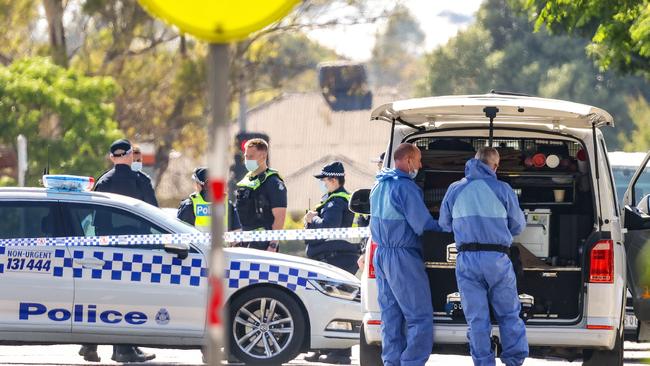
“We are very much a contextual discipline,” he said.
“We are sort of the ‘what happened specialty’, rather than the ‘who done it specialty’.
“So we apply our findings to context.
“If we are an advocate for anybody, it’s the deceased person, and getting them the truth.”
Prof Woodford easily switches from sporting a suit to attend court or sitting at his desk in his office for meetings, to walking down the halls at the VIFM and jumping into PPE to get his hands dirty in the mortuary.
Standing in bloodstained boots in the middle of the building’s largest autopsy room, he recalls how the now clinically-cleaned empty space for our visit was divided by curtains with teams working on multiple bodies at once in the aftermath of the state’s devastating Black Saturday bushfires in 2009.
“There was order in the chaos,” he described.
“We started with an open-ended disaster, and we ended up, within three months, identifying everybody who died in that disaster – 173 people.
“That was the defining moment of my career - and in the life of the institute - giving closure to the families.”
At the time they only had space to store 90 bodies, with the government investing in expanding the facilities in the months that followed.
They now have the capacity for 270 bodies.
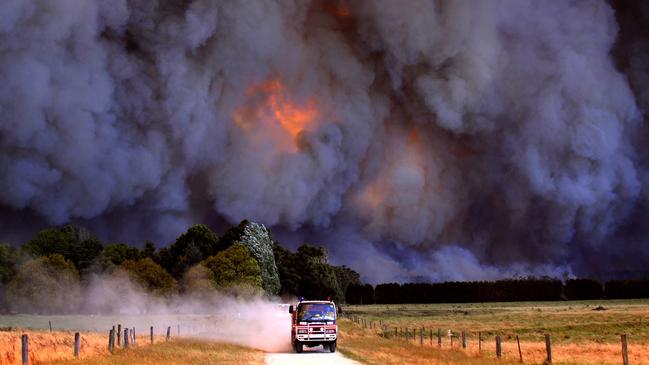
All too often, Prof Woodford is asked if his work mirrors TV crime dramas such as CSI, Midsomer Murders or Silent Witness.
When the question was put by this reporter, Prof Woodford laughed.
“Everybody thinks this place is CSI,” he said.
Pressed again if there were any similarities to the TV productions, he said, “um” before a long pause.
“No, not really,” he then answered.
“The reason I say that is, there are similarities, of course, in the scientific stuff.”
But he said you won’t find the click-clack sound of stilettos in the autopsy rooms or labs at the institute.
“Or the mood lighting,” he joked.
“Also, when somebody says in Silent Witness, “I think the person’s been dead for about two hours”, we wouldn’t say that sort of stuff,” he said.
“There are ways that we can offer an opinion about the time of death, but there more complicated than that.
“Is it Midsomer Murders where they say ‘between three and four in the morning sort of thing?’
“I mean, it just doesn’t happen that way.
“We can do temperatures of bodies at scenes, if we go to scenes, and we can offer opinions, but often it is more, when were they last seen alive and when they were found dead, and it’s somewhere between there.”
Like the Sheffield case early in his career where botany was of assistance, other findings at scenes can also help with determining a time of death.
“I like going to scenes - you never forget the scene of a case you’ve been to,” he said.
“There are other ways you can determine time of death, like through entomology, insects and bugs, life cycles.
“How insects can contribute – they cause post mortem effects on bodies.
“For instance, ant attacks and abrasions.”
Another difference to the popular TV shows is in America, in particular, they have a different system to Australia.
“They have a medical examiner system, so you might think in between a coroner and a forensic pathologist,” Mr Woodford said.
“They are doing the death investigation from a legal perspective as well as the medical perspective.”
After a day in his blue threads, Prof Woodford doesn’t fancy going home and watching such shows.
“They don’t really interest me. I get enough of it here,” he said.
“I think part of it for me, and this is more a personal view, it’s the work-life balance thing.
“For my whole medical career, I’ve tried to keep work at work. I was training to be a surgeon in a previous life at the Austin, and made a really deliberate effort, as it was really busy, to leave everything at work when I left.
“And when I was in the shower in the morning, I would be thinking about who needed to go to theatre, who I needed to tell they had cancer, and all that sort of stuff.
“But you can’t wear that stuff all of the time.”
Cases of trauma, in particular in young people whose lives have been cut short, stay with you, he said.
“Or if you think of people who have suffered around the time of death, that’s a really difficult thing to contemplate sometimes,” he said.
“These days we are particularly keen to ensure we have appropriate debriefing for people.”
Advances in technology has meant Prof Woodford has seen many changes to the way things are done in his almost 19 years at the institute.
A government investment in a CT scanner at the institute in 2005 was a “game changer” and is used to do full body scans on all remains.
“In 2005, in the wake of the Bali bombings, we were talking with government about how we would manage mass disaster more efficiently here and one of the things the government provided some money for was a CT scanner, just like the ones you would see in a hospital,” Prof Woodford said.
“We’ve always X-rayed dead bodies, in looking for bullets, looking for collapsed lungs and things like that.
“Where we are really improving, and where the CT is helping us, is sometimes we can see a cause of death without putting knife to skin.
“If we were concerned in the past about haemorraghe in the head, for instance, in an old person; have they fallen over, have they got what is called a subdural haemorraghe, we would need to open their head up and have a look inside.
“But now the CT scan allows us to see that without having to do that.”
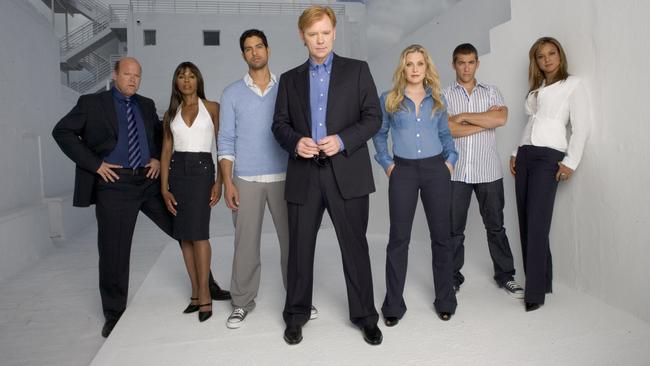

Increasingly now, modern forensic facilities have CT scans, with the VIFM one of the first to scan everyone, forming a resourceful database.
“We have the world’s biggest depository of head to toe scans of dead people. We’ve probably got over 100,000 scans now,” he said.
“And that’s a huge resource for research purposes.
“It’s a permanent digital record of the case.
“We can scan inside the body bag. It’s a way of saying this is the way the body was when it first came into the building.
“Once you’ve got that digital data, you can do a lot with it. You can manipulate it.
“So let’s say there’s a suspected gunshot wound to the head for instance. One thing you can do with that data is, I can come up here (to my office) and I can look at that image and actually tell from certain characteristics where the bullet went in.
“So I can see where the entrance wound was, whether the bullet is still in the body, whether its worth the ballistics people being here to actually take that bullet and comparing it with something else, I can get ideas about what other natural disease process was going on, if there’s been allegations of other trauma, like bruises, and see if there’s any other fractures.
“What’s even better, rather showing a jury down the track a really grisly image of a brain with a bullet in it, we can actually show them some of the CT scan, and they can understand the case without getting traumatised by it. So that’s really important.
“That can be really traumatising for people, particularly family of the victim and the jurors who have to see this stuff.”
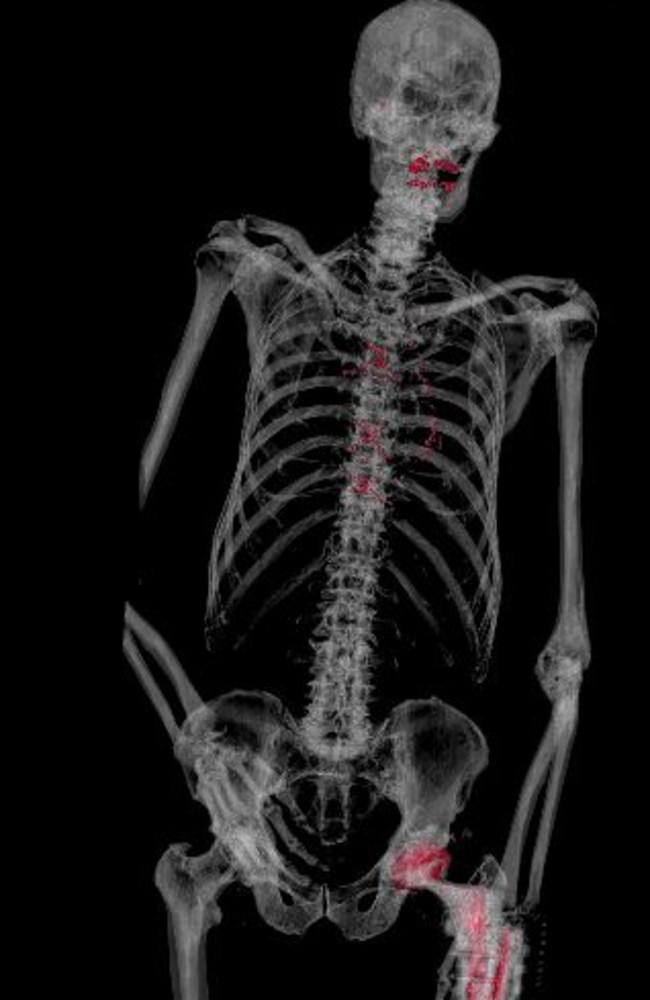
The institute has also been looking at ways they can use the data to 3D print parts of bodies.
“So let’s say there’s a hole in the skull. We can actually print that and show the hole and have that to show to the jury?” Prof Woodford said.
“Or make a movie of it and digitally reapply the skin so you can see where the bullet went in.
“There’s lots of possibilities.”
It’s a stark contrast to when he first started in the industry and there was little other option than getting a scalpel out.
“We still had X-rays in those days, but in an X-ray you would have just had a chest X-ray,” he said.
“It certainly didn’t give you much detail. You can’t manipulate the image, you can’t turn it around. It’s just two dimensional representation.
“It was also fiddly. We would have to get the body onto an X-ray plate, that plate would need to be taken away and put in a bath and developed.”
But it’s not a case of in with the new and out with the old, he said, with X-ray technology still crucial in “subtle findings like fractures of growth plates in infants” in suspected child abuse cases.
“We do that on all the baby cases that come through here, we look very carefully at their joints and their long bones, to see whether they are traumatised,” he said.
“In the old days, we would have access to X-ray technology but we certainly wouldn’t do it on everybody and it certainly wouldn’t capture the things that we’ve got now.
“And because we didn’t have that ability to look inside people before we made decisions about what happened to them, we had a very much lower recourse to autopsy, so maybe about 80 per cent of cases would go to autopsy, whereas it’s about 48 per cent now.”
Another thing that drives the lower autopsy rate is an increasing societal reluctance to want to undergo autopsy, mostly for cultural reasons.
“I know coronial counsel here is working on ways of engaging better with communities of faith and different cultures, in Aboriginal cultures as well, and how the system can better accommodate their needs, all at the same time as satisfying what the coroner needs to do,” he said.
He said CT scans had helped them deal with family’s objections to autopsy, especially when the death is non-suspicious.
“There’s probably about 20 per cent of cases that are coming in here that are natural causes death,” he says.
In some cases, despite their best efforts, a cause of death can’t be determined.
“It’s low,” he said.
“About five per cent of cases, we get to the end of doing everything, and that’s a full autopsy, looking at tissues under the microscope, looking at toxicology, sometimes looking at hair for toxicology as well, and we go ‘I really don’t know’.
“I don’t know could mean that there is probably a genetic cause for this person’s death, or a drug we haven’t been able to identify, as we’ve seen an increasing number of novel psychoactive drugs, street derived substances or synthetics.”
The more decomposed a person is, the more difficult it is to also determine the cause of death, he said.
Prof Woodford realised his love of forensic pathology while doing a mandatory two-week stint at the VIFM when studying medicine.
“I was training to be a surgical pathologist and in those days you came here as part of your training to get some forensic autopsy experience,” he said.
“And then I went away and finished my training and worked in private just for a year or so.
“Then I ended up coming back here briefly in about the year 1999.”
He then moved to the UK, but the VIFM kept calling him back.
In 2003, he returned and has never left.
He is only the second director since the institute opened in 1988, taking over from the institute’s founding director and fellow forensic pathologist, Stephen Cordner, when he retired in 2014.
He knew he had big shoes to fill, but wouldn’t want to be doing anything else.





